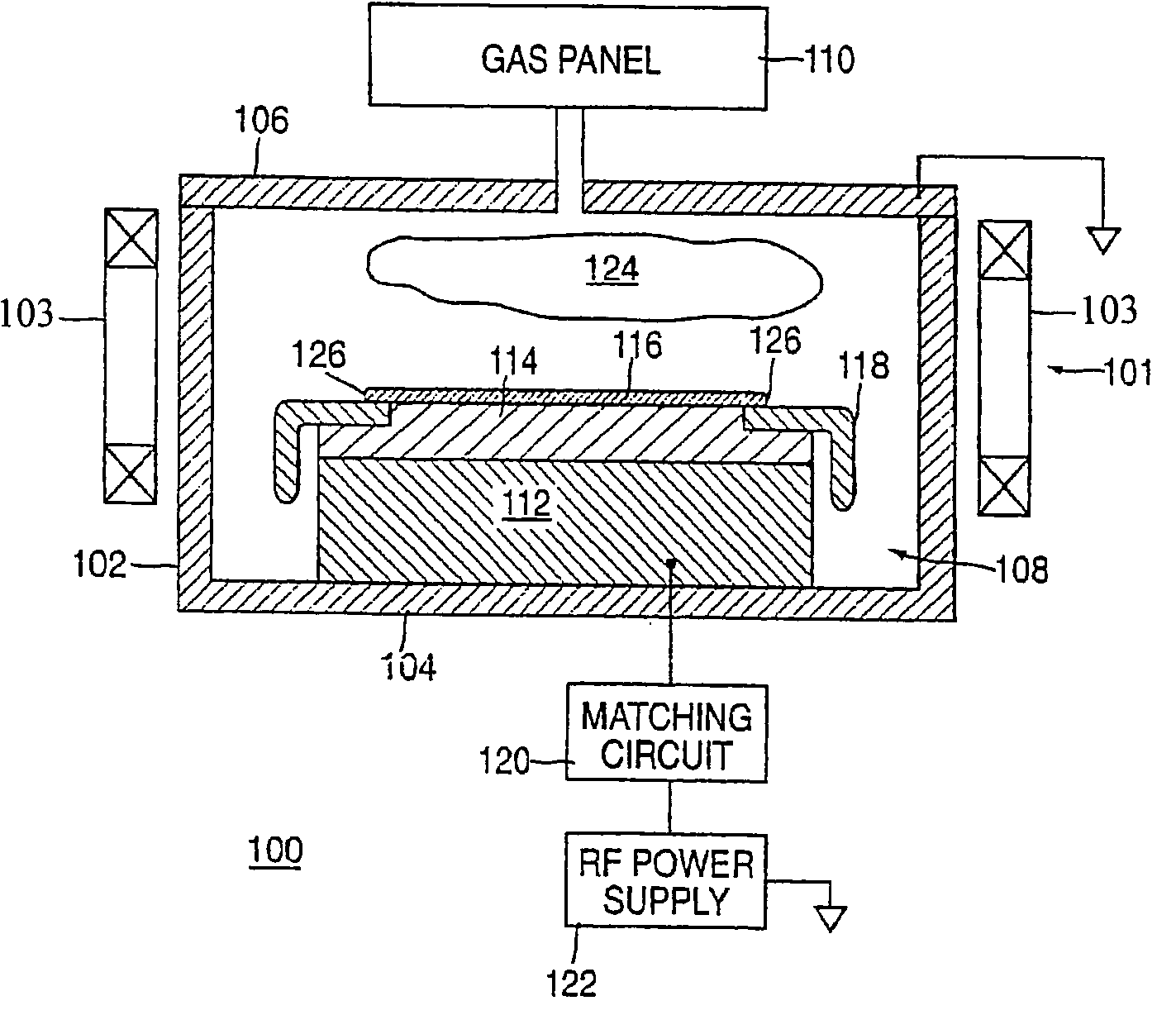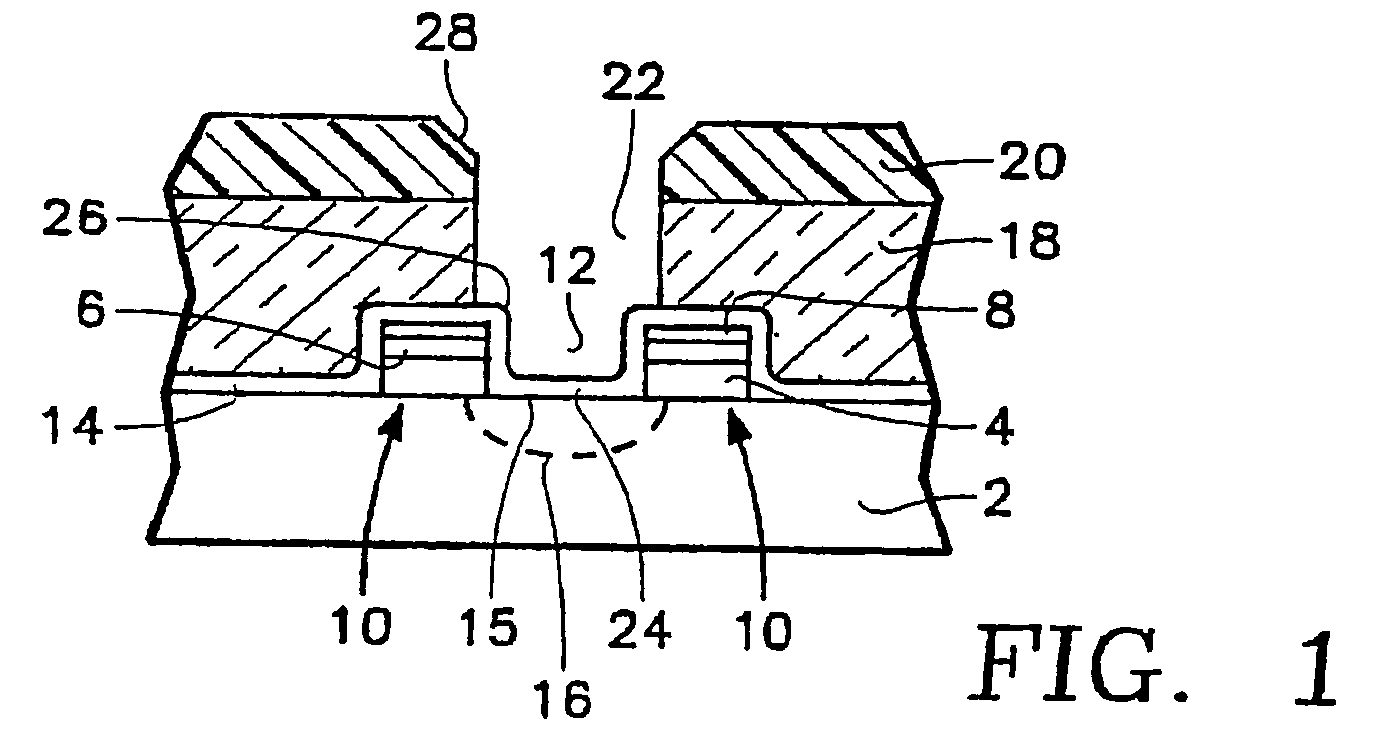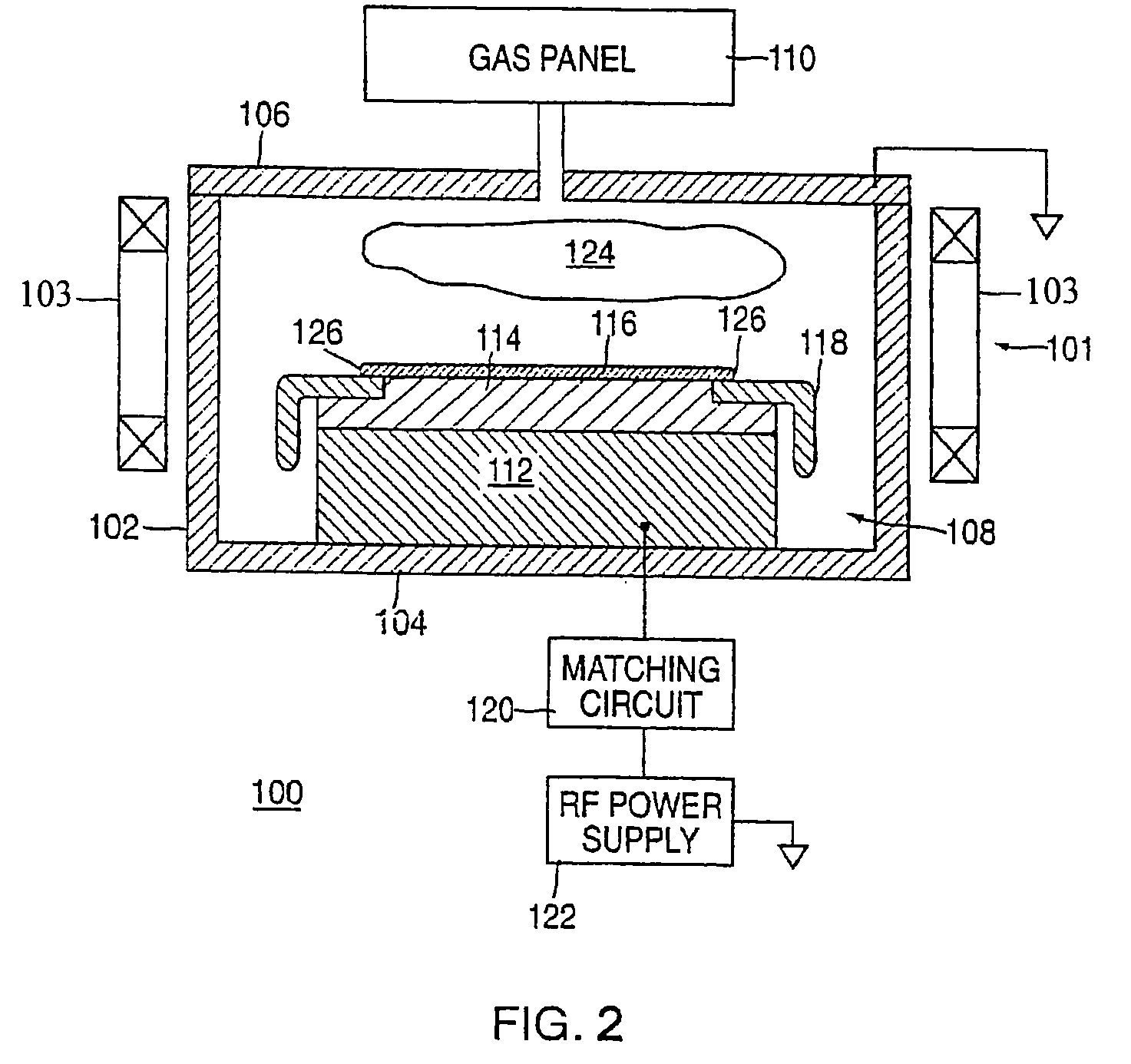Self-aligned contact etch with high sensitivity to nitride shoulder
a contact etching and high sensitivity technology, applied in the field of plasma etching of dielectric materials, can solve the problems of reducing the etching efficiency affecting the etching accuracy of the gate structure, so as to achieve the effect of reliably controlling the etching
- Summary
- Abstract
- Description
- Claims
- Application Information
AI Technical Summary
Benefits of technology
Problems solved by technology
Method used
Image
Examples
example 1
[0065] This experiment demonstrates the etch stop behavior of Freon 134 on undoped oxide.
[0066] A wafer was provided which consisted of a surface layer of 9% PSG at the center of the wafer disposed on an undoped oxide substrate. Three separate holes were etched into the wafer using a MERIE reactor equipped with an eMAX chamber and using a gas stream consisting of C4F6Freon 134 / O2 / Ar. The processing parameters were as follows:
Chamber Pressure:40 to 80 mTorrPower used to generate plasma:1000 to 1800 wattsCathode Temperature:15 to 35° C.B-Field:0 to 50 GaussO2 flow rate:15 sccmFreon 134:2-8 sccmArgon flow rate:500 sccmC4F6 flow rate:20-30 sccm
[0067] The duration of the etch was approximately 60 to 90 seconds. The plasma readily penetrated the doped oxide surface layer, but exhibited etch stop behavior with respect to the underlying substrate.
example 2
[0068] This example illustrates the lack of selectivity Freon 134 exhibits with respect to flat nitride.
[0069] A wafer was provided which consisted of the following layer sequence:
MaterialThicknessDUV PRBARC700 ÅTEOS4000 Å BPSG4000 Å SiON Liner180 ÅPolygate
[0070] Using the methodology and apparatus of EXAMPLE 1, the undoped oxide layer 8 was etched using C4F6 / O2 / Ar chemistry at respective flow rate ratios of 25:15:500 until the BPSG layer was exposed.
[0071] Next, the chemistry was switched to Freon 134 / CHF3 / Ar at respective flow rate ratios of 6:80:90, and etching was continued. The plasma penetrated the flat nitride layer at the bottom of the gap, thus demonstrating lack of selectivity of Freon 134 to flat nitride.
example 3
[0072] This example illustrates the poor corner nitride selectivity exhibited by C4F6 / O2 / Ar only chemistry.
[0073] The experiment of EXAMPLE 2 was repeated, using different chemistry. C4F6 / O2 / Ar was used to etch through the TEOS layer with flow rates of 30 / 20 / 500, respectively. The etch was terminated after the plasma had penetrated the BPSG layer and had come into contact with the corner nitride. Next, C4F6 / O2 / Ar / Freon 134A was used to etch through the BPSG layer using flow rates of 27 / 15 / 500 / 9, respectively. The plasma exhibited etch stop behavior with respect to the flat nitride portion, thus demonstrating the selectivity of C4F6 / O2 / Ar / Freon 134A chemistry to flat nitride. However, the corner nitride was noticeably eroded where it had come into contact with the plasma during the first etching step, thus demonstrating that C4F6 / O2 / Ar only chemistry exhibits poor corner nitride selectivity.
PUM
 Login to View More
Login to View More Abstract
Description
Claims
Application Information
 Login to View More
Login to View More - R&D
- Intellectual Property
- Life Sciences
- Materials
- Tech Scout
- Unparalleled Data Quality
- Higher Quality Content
- 60% Fewer Hallucinations
Browse by: Latest US Patents, China's latest patents, Technical Efficacy Thesaurus, Application Domain, Technology Topic, Popular Technical Reports.
© 2025 PatSnap. All rights reserved.Legal|Privacy policy|Modern Slavery Act Transparency Statement|Sitemap|About US| Contact US: help@patsnap.com



